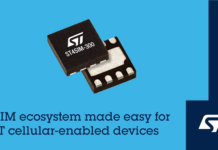
If you are connected to devices then you need to focus on its security. IoT is knotted with connected devices which are soon going to be measured in billions and economic impact of IoT in trillions. Security which we often neglect is the critical element for IoT deployment and often neglected aspect in the development part. With growing number of devices, the call for security becomes loud.
Challenges with IoT security
- As the network of IoT increases with more number of connected devices, their security becomes crucial as they are beyond the network’s firewalls. The connectivity is seamless which can even thrive the vulnerabilities. Earlier only computers have to be secure than smartphones and now wearable’s, smart homes and smart industry.
- Computers and smartphones come with updates but have you heard about IoT device updates. It is another reason for vulnerability. An outdated hardware is more prone to security risks. Many IoT devices are easy to made and uses cheap processors which are responsible for its simple functionality but no space for patches or future updates.
- Breach of privacy is another contributor to security risk. It is well-known sensors within IoT framework stores data and manipulates them for meaningful information. What if this information reaches to some intruder? The information stored can be used by hackers, un-intended corporations and situation become more serious when it is used for money transfers.
- As IoT uses the network-based approach to connect. The security concern for networking in IoT becomes more serious as it consists of a wider range of communication protocols, device capabilities and standards which poses issues and increased complexities.

Solution: IoT security can be improved by taking following measures
- Understanding security at Basic Level: Developers must ensure to keep security features at the initial stage of prototype development. Tamper detection design technique should be deployed to sense the threats with help of suite of different sensors deployed for a single type of threat. Some tamper detection examples include Switches to detect the access and opening of gateways, Wi-Fi communication and Channel State Information (CSI).
- Authentication: In IoT, single device get connected to many users and by securing authentication many risks could be avoided. When connected IoT and machine to machine devices (embedded sensors or end-points) needs access to IoT framework the identifiers differ as in typical enterprise network the intervention is mostly of humans which get authenticate by using credentials. For IoT, identifiers include radio-frequency identification (RFID), shared secret, X.509 certificates and MAC address of the endpoint.
- Encryption: Once the connection has been established securely, the traffic flows between the devices and backend servers should be properly encoded by the cryptographic algorithm. As IoT devices have limited space with less power, only lightweight encryption tools should be used for them. Several lightweight cryptography standards include block ciphers, stream ciphers and message authentication codes.
- Segmented Network: The network over which the information is shared and stored should be segmented to isolate it from rest of the network functionalities. It will prevent easy detection of the section that has breached without affecting entire network. The approach used for scaling and segmenting the network should be common for abstracting the provisioning of segmentation across switches, access points, firewalls and routers. The solution must be flexible enough to respond to dynamic nature of devices and networks.
Above were the few steps for making our devices secure but the deployment of security at designing phase is most important. Growing awareness regarding security has brought a drive for common IoT security standards is getting momentum. In future, IoT will become more secure, more reliable and more promising.


















